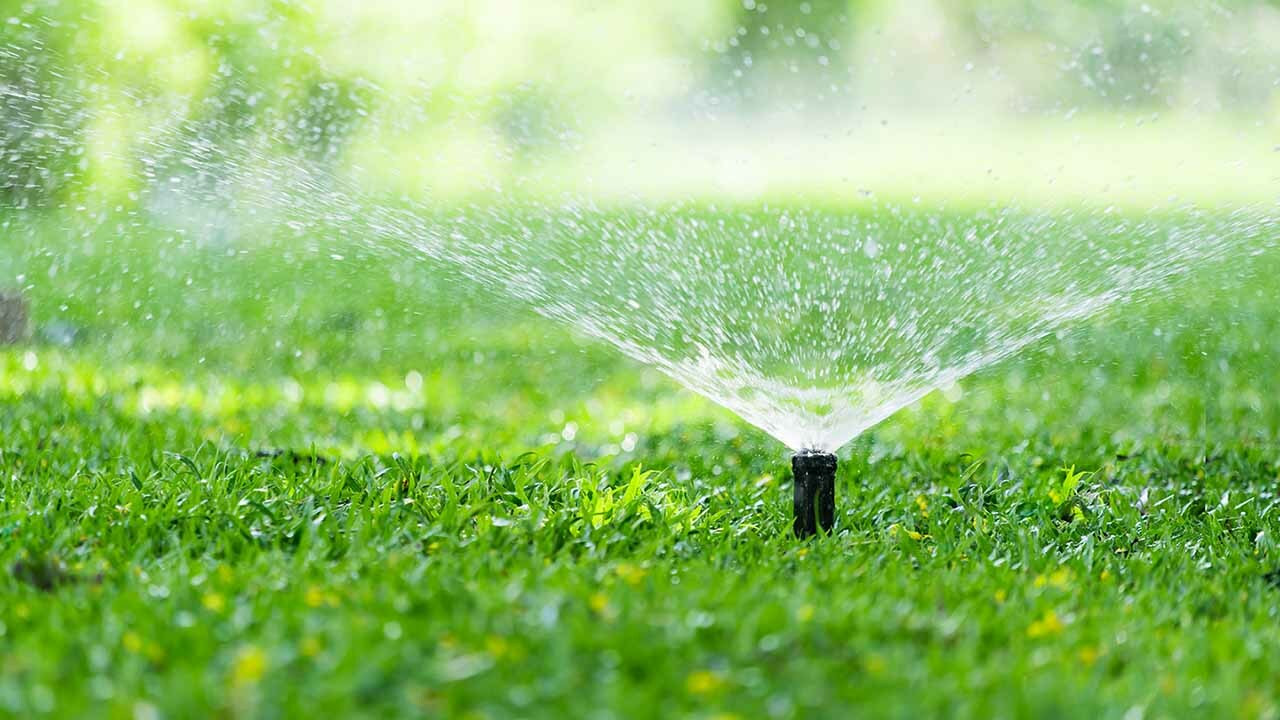Table of Contents
A lush, green lawn is the pride of any homeowner, creating curb appeal and providing a welcoming space for family and friends. But maintaining that healthy look takes more than just occasional mowing or fertilizing—it requires a well-designed lawn irrigation system. Whether you’re in a hot, dry climate or dealing with unpredictable rainfall, proper irrigation ensures your lawn stays hydrated, healthy, and thriving.
In this guide, we’ll explore the importance of lawn irrigation, different types of systems, how to set up an efficient schedule, and tips to conserve water while maximizing lawn health.
Why Lawn Irrigation Matters
Grass, like all plants, needs water to grow. While some areas may benefit from consistent rainfall, many climates (and even seasonal dry spells) make natural watering unreliable. That’s where an irrigation system becomes crucial.
Key Benefits of Lawn Irrigation:
- Consistent Water Supply: Prevents under- or over-watering.
- Healthier Lawns: Reduces stress on grass, resulting in deeper roots and greener blades.
- Time-Saving: Automates the watering process, freeing you from daily upkeep.
- Improved Property Value: A well-maintained lawn adds to curb appeal and home resale value.
- Efficient Water Use: Smart irrigation systems conserve water and reduce utility bills.
Types of Lawn Irrigation Systems
Choosing the right irrigation system depends on your lawn size, soil type, budget, and climate. Here are the most common types:
1. Sprinkler Systems
Sprinklers are the most popular form of irrigation, ideal for medium to large lawns. These systems distribute water evenly and can be automated using timers or smart controllers.
Types of sprinklers:
- Fixed spray heads: Best for small, even areas.
- Rotary heads: Cover large lawns with fewer sprinklers.
- Oscillating or portable sprinklers: Budget-friendly and easy to use.
2. Drip Irrigation
Drip irrigation delivers water directly to the base of plants or grass using a network of tubes and emitters. While often used in garden beds, it can be adapted for lawns.
Pros:
- Minimal water waste
- Reduces evaporation
- Excellent for conserving water in dry climates
3. Soaker Hoses
A simple alternative to drip irrigation, soaker hoses release water along their length, ideal for narrow or irregular-shaped lawns and garden beds.
4. Smart Irrigation Systems
These systems use weather data, soil sensors, and automated controllers to adjust watering schedules in real-time. They’re efficient, eco-friendly, and can be controlled via smartphone apps.
Creating an Effective Irrigation Schedule
An efficient watering schedule helps your lawn absorb water effectively without promoting disease or wasting resources.
Tips for a Healthy Watering Routine:
- Water Early in the Morning: Reduces evaporation and gives grass time to dry, preventing fungal growth.
- Deep and Infrequent Watering: Watering deeply encourages deeper root growth and drought tolerance.
- 1–1.5 Inches of Water per Week: This includes rainfall—use a rain gauge to track.
- Adjust for Season and Weather: Water more during hot, dry spells, and reduce during cool, rainy periods.
Signs Your Lawn Needs Water
Even with a schedule in place, observing your lawn helps you respond to changing needs. Signs of an under-watered lawn include:
- Grass blades that fold or curl
- Footprints that remain visible on the grass
- A dull, bluish-green color
On the other hand, over-watering can lead to:
- Shallow roots
- Fungal growth
- Increased pest activity
- Water runoff and waste
Water Conservation Tips
Water conservation is essential, both for the environment and your utility bill. Here’s how to make your irrigation more efficient:
- Use Mulch: Helps soil retain moisture and reduces evaporation.
- Install Rain Sensors: Automatically shuts off sprinklers when it rains.
- Check for Leaks: Inspect hoses and sprinkler heads for leaks or clogs regularly.
- Aerate the Soil: Improves water penetration and reduces runoff.
- Zone Your System: Water sunnier areas more than shady spots to prevent over-watering.
Professional vs. DIY Lawn Irrigation Installation
Depending on your budget and comfort level, you may choose to install an irrigation system yourself or hire a professional.
DIY Installation:
- Cost-effective
- Requires knowledge of water pressure, sprinkler layout, and pipe installation
- Good for small or simple lawns
Professional Installation:
- Custom-designed for your property
- Time-saving and efficient
- Includes zoning, timers, and backflow prevention
- Ideal for large or complex lawns
If you’re unsure, many irrigation companies offer consultations to help you choose the right system and layout for your property.
Maintenance and Upkeep
Even the best irrigation system requires regular maintenance. Here’s what to keep in mind:
- Seasonal Checkups: Inspect and adjust sprinklers in spring and fall.
- Winterization: In colder climates, blow out water lines to prevent freezing.
- Clean Sprinkler Heads: Prevent blockages and ensure even water distribution.
- Reprogram Timers: Adjust watering times with changing seasons or after heavy rainfall.
Proper maintenance ensures your system operates efficiently year-round, saving you time, money, and water.
Final Thoughts: A Greener Lawn Starts with Smarter Irrigation
A beautiful, vibrant lawn doesn’t have to come at the cost of time, effort, or water. With the right irrigation system and schedule, you can ensure your grass gets the hydration it needs without waste or guesswork. Whether you choose a high-tech smart system or a simple sprinkler setup, consistent and thoughtful watering is the foundation of a healthy lawn.
Invest in a lawn irrigation solution today—and enjoy the lasting benefits of a lush, green yard that enhances your home’s beauty and livability.








